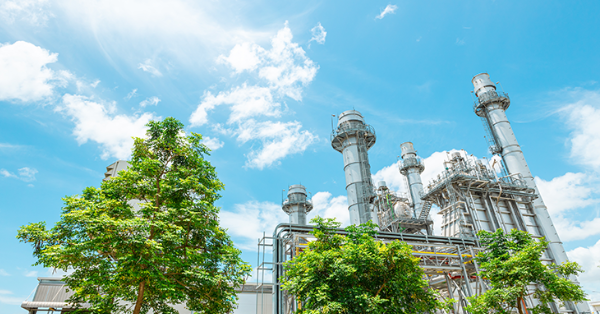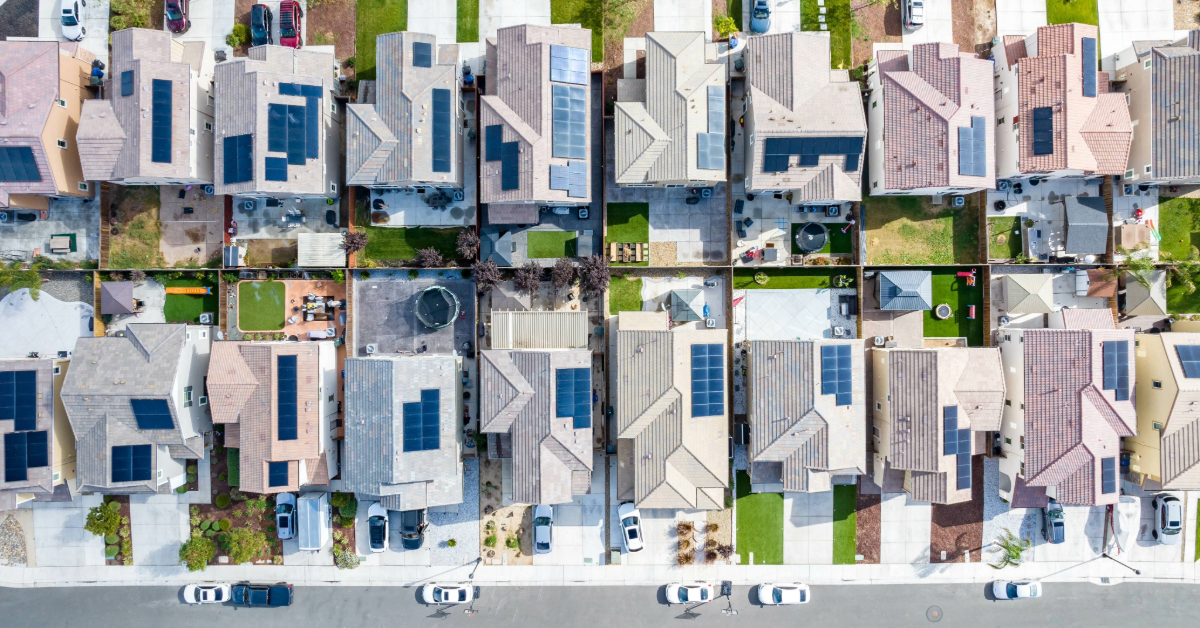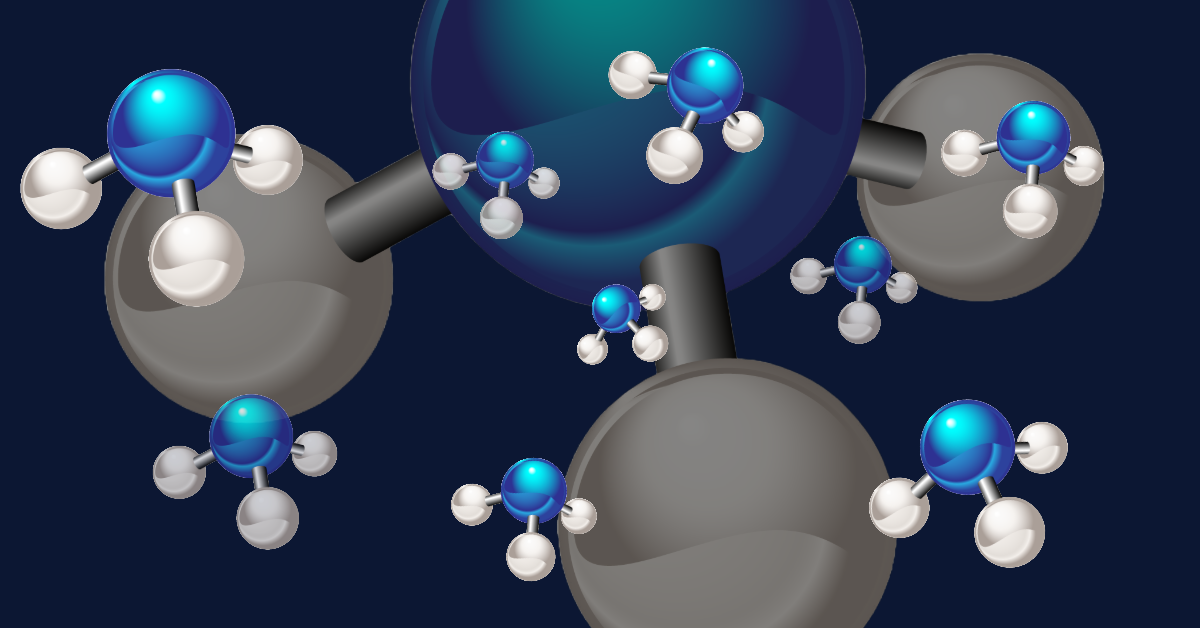The Need for a New Planning Methodology - Integrated System Planning
The energy industry has undergone significant change in the past twenty years or so, and while new technologies enter the stage, and older players...

The world is facing an urgent and inevitable challenge: combating climate change. In the pursuit of sustainable energy solutions, the integration of low carbon gases holds immense promise. This revolutionary approach can significantly reduce carbon emissions and pave the way for a cleaner, greener future.
In this article, we will delve into the exciting world of low carbon gases, namely hydrogen, biogas, and synthetic methane. We will discuss their integration into the current energy system and how they can complement or replace existing technologies. As we navigate this path to a more sustainable future, one technology platform will stand out as a critical enabler – PLEXOS. So, without further ado, let us explore the matter.
To comprehend the significance of low carbon gases, we must first understand what they are. Low carbon gases encompass a range of gaseous fuels that emit minimal carbon dioxide (CO2) or are carbon-neutral during combustion. These gases can be produced through various processes, such as electrolysis (for hydrogen), anaerobic digestion (for biogas), and power-to-gas technologies. Each offer distinct advantages in our journey towards a greener energy landscape.
So, who are these remarkable, eco-friendly players?
Hydrogen, recently the most popular fuel in the energy transition, is the lightest and most abundant element in the universe. It has emerged as a leading contender in the race towards carbon neutrality. This remarkable gas stands out as a clean fuel, emitting only water vapor when used for energy production. In other words, it is the best fuel in the business to protect the environment and promote sustainability.
This gas comes in various different 'colours', a concept used to denote the environmental impact of hydrogen production based on the source of electricity used in the production process. It is a way of categorising hydrogen based on its carbon footprint. The various colours of hydrogen are typically associated with the following sources of electricity:
Grey Hydrogen: Grey hydrogen is produced using electricity generated from fossil fuels, such as coal, natural gas, or oil. It has a high carbon footprint due to the emissions associated with fossil fuel electricity generation. Grey hydrogen is the most common type of hydrogen but is considered less environmentally friendly.
Blue Hydrogen: Blue hydrogen is produced using the same methods as grey hydrogen (e.g., steam methane reforming), but the carbon emissions are captured and stored (carbon capture and storage, or CCS). This process reduces the carbon footprint of the hydrogen production, making it a more environmentally friendly option compared to grey hydrogen.
Green Hydrogen: Green hydrogen is produced using renewable energy sources, such as wind, solar, or hydroelectric power, to perform electrolysis, splitting water into hydrogen and oxygen. It is considered the most environmentally friendly form of hydrogen production because it has zero carbon emissions during the production process.
Pink Hydrogen: Pink hydrogen is a term used to describe hydrogen produced using nuclear energy, which can generate high-temperature steam for efficient hydrogen production. Nuclear energy has a low carbon footprint, making pink hydrogen a low-emission option.
To learn more about hydrogen as a fuel, how it is produced and who uses it, read our article on 'The future of Hydrogen and its role in decarbonization'.
Biogas, also known as biomethane, is nature's gift to sustainable energy. It presents the unique opportunity to harness energy from organic waste materials. The process of anaerobic digestion converts biodegradable, organic matter, such as agricultural residues, animal waste, municipal waste, and sewage sludge, into a biogas rich in methane.
The beauty of biogas lies in its circular economy approach. It is effectively recycling waste materials that would otherwise contribute to greenhouse gas emissions, as leaving waste on landfills releases harmful methane. By harnessing biogas as a renewable fuel and replacing fossil fuels, we curtail emissions. We also tap into a constant and reliable energy source.
Fun fact, according to National Grid, humans have used biogas as a source of heat and flammable matter for centuries.
The marriage of one of the elements producing the problem, carbon dioxide, and hydrogen begets a remarkable offspring: synthetic methane. Through innovative power-to-gas technologies, carbon dioxide captured from industrial processes (known as CCS, Carbon Captured Storage), or the atmosphere, can be combined with surplus hydrogen to create synthetic methane. This eco-friendly gas can seamlessly integrate into the existing natural gas infrastructure, offering a sustainable alternative to conventional fossil fuels. The true advantage of synthetic methane lies in its ability to recycle carbon emissions, transforming them into a viable energy source.
The concept of low carbon gases as a product and energy vector offers unparalleled potential in transforming the energy landscape. But one question remains: How can we effectively integrate them into our current gas system, cities, factories and even homes?
To effectively embrace the potential of low carbon gases, we must navigate a path riddled with complexities and obstacles. Here are the main challenges:
One of the primary challenges of integrating low carbon gases is the need for extensive infrastructure development and substantial investments. The existing energy infrastructure, which is predominantly designed for conventional fossil fuels, must be upgraded, or retrofitted to accommodate the unique characteristics of low carbon gases. This includes alterations to pipelines, storage facilities, and distribution networks to ensure the safe and efficient transportation of gases.
Moreover, the establishment of new production plants and specialised equipment for the generation and purification of low carbon gases demands significant financial commitments.
The scale of these infrastructure upgrades and investments poses a considerable hurdle, especially for regions with limited financial resources. Securing funding from public and private sources becomes imperative to expedite the integration process. Governments, in collaboration with industry stakeholders, must work together to develop favourable, sustainable, and cost-effective financing models and incentives that attract investors and foster innovation. Additionally, public-private partnerships can play a crucial role in mobilising resources and expertise for successful integration.
Another critical challenge lies in the development and deployment of advanced technologies for the production, storage, and transportation of low carbon gases. Current technologies, though promising, may not be fully optimised to achieve cost-effectiveness and efficiency at a large scale. For instance, electrolysis processes used to produce hydrogen still consume a lot of energy and require further advancements to improve overall economics.
The energy industry needs to enhance the full system to be able to deal with challenges like:
Overcoming these technological barriers, demands the best research and development efforts. Collaboration between the private and public sectors, research institutions, industry players, and governments can accelerate the innovation cycle and promote knowledge sharing. Investing in research and incentivising technological advancements will be pivotal in achieving breakthroughs that drive down costs and improve the viability of low carbon gases.
The successful integration of low carbon gases relies heavily on a supportive and enabling regulatory framework. Europe has become the leader in this race globally. In March 2023, the European Commission proposed a legislative framework for the European Hydrogen Bank aimed to incentivise early projects, by covering and eventually also lowering, the cost gap between renewable hydrogen and the fossil fuels. There, policymakers have been developing best practices and implementing policies that incentivise the adoption of low carbon gases and level the playing field with conventional fossil fuels. Carbon pricing mechanisms, emissions reduction targets, and renewable energy mandates can serve as powerful spurs to encourage industries and consumers to transition towards low carbon alternatives.
Furthermore, streamlined, and transparent regulatory procedures are necessary to facilitate the approval and implementation of projects related to low carbon gases. Policy stability and long-term commitments are equally crucial in providing a conducive environment for investors, ensuring the viability of their investments.
Transitioning towards a low carbon future demands a comprehensive and systematic approach to integrate low carbon gases effectively into our current energy system. This Integration Roadmap charts a path forward, guiding us through the intricacies of technology deployment, infrastructure development, and policy implementation.
The first step in the integration roadmap involves conducting a comprehensive analysis of the current energy system. This includes having a transparent understanding of the existing energy sources, consumption patterns, and infrastructure capacity. By understanding the power and gas demands and supply dynamics, we can identify the areas where low carbon gases can have the most significant impact. The importance of being able to run a strong analysis of the full system, performing a sector coupled, co-optimised approach is key at this stage.
The successful integration of low carbon gases hinges on the availability of sufficient quantities. Scaling up production of hydrogen, biogas, and synthetic methane is essential to meet the increasing demand. Quantifying the different production plans by regions, countries and the integration with the current energy sources is a must-have. This involves investing in new production facilities and incentivising research and development to enhance production efficiency.
Adapting the existing energy infrastructure to accommodate low carbon gases is a critical aspect of the integration roadmap. This includes retrofitting natural gas pipelines to handle hydrogen or biogas, establishing new storage facilities, and upgrading distribution networks. Collaborating with energy companies and infrastructure operators is crucial to ensure seamless integration.
All of these activities should be planned with a couple of variables in mind: Long-term Planning and Flexibility. The integration roadmap must be a long-term, flexible plan that adapts to changing circumstances and technological advancements. Regular reassessment and adjustments ensure that the roadmap remains relevant and effective in achieving its objectives. To be able to play with the different infrastructure developments paths on a dynamic basis together with data-driven insights will help decision-makers to optimise future portfolios, plants, and projects within the integration process.
PLEXOS, as a cutting-edge energy analytics platform, emerges as a vital enabler for the seamless integration of low carbon gases into the current system. Its sophisticated modelling capabilities allow for comprehensive analyses of complex energy systems and the integration of renewable energy sources, low carbon gases, and conventional fuels. PLEXOS can simulate all the possible scenarios on a dynamic basis, considering factors like total system cost, greenhouse gas emissions, and policy constraints, ensuring a balanced and economically viable transition.
A significant number of energy players are working with PLEXOS to answer key energy business questions affecting companies at all levels and their investment plans in line with the potential system development. Some of the biggest energy business challenges are:
The integration of low carbon gases into the current energy system holds immense promise in combatting climate change and transitioning towards a sustainable future. Hydrogen, biogas, and synthetic methane are the trailblazers of this eco-friendly revolution, offering cleaner alternatives to traditional fossil fuels. By understanding their unique attributes and investing in green production processes, we can unlock the full potential of low carbon gases.
While challenges like infrastructure, technology, and regulatory support are significant, solutions are within reach. PLEXOS plays a pivotal role in overcoming these hurdles and ushering in a greener era. Embracing these game-changing gases together with the right technology will undoubtedly propel us towards a greener future for generations to come. The time to act is now.
Ready to start planning with a co-optimized modeling and simulation solution?

The energy industry has undergone significant change in the past twenty years or so, and while new technologies enter the stage, and older players...

What is (green) ammonia? Ammonia (NH3), recognized for its pungent nature, is indispensable for the production of agricultural fertilizers and...

In our recent blog, The Hydrogen Story – How we Got Here,we examined the technologies, events, and phenomena that have caused us to arrive at the...